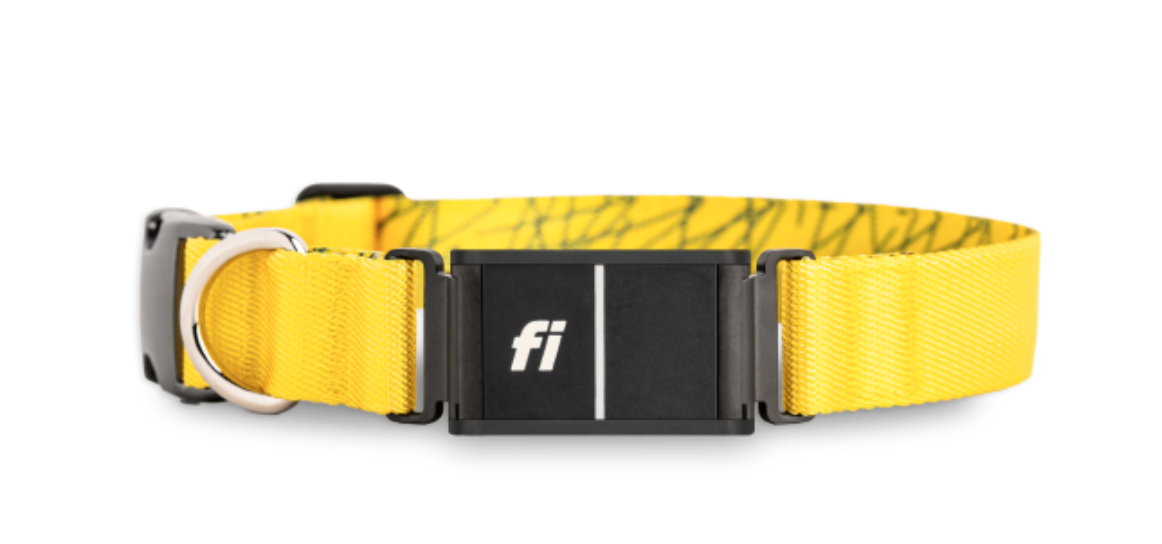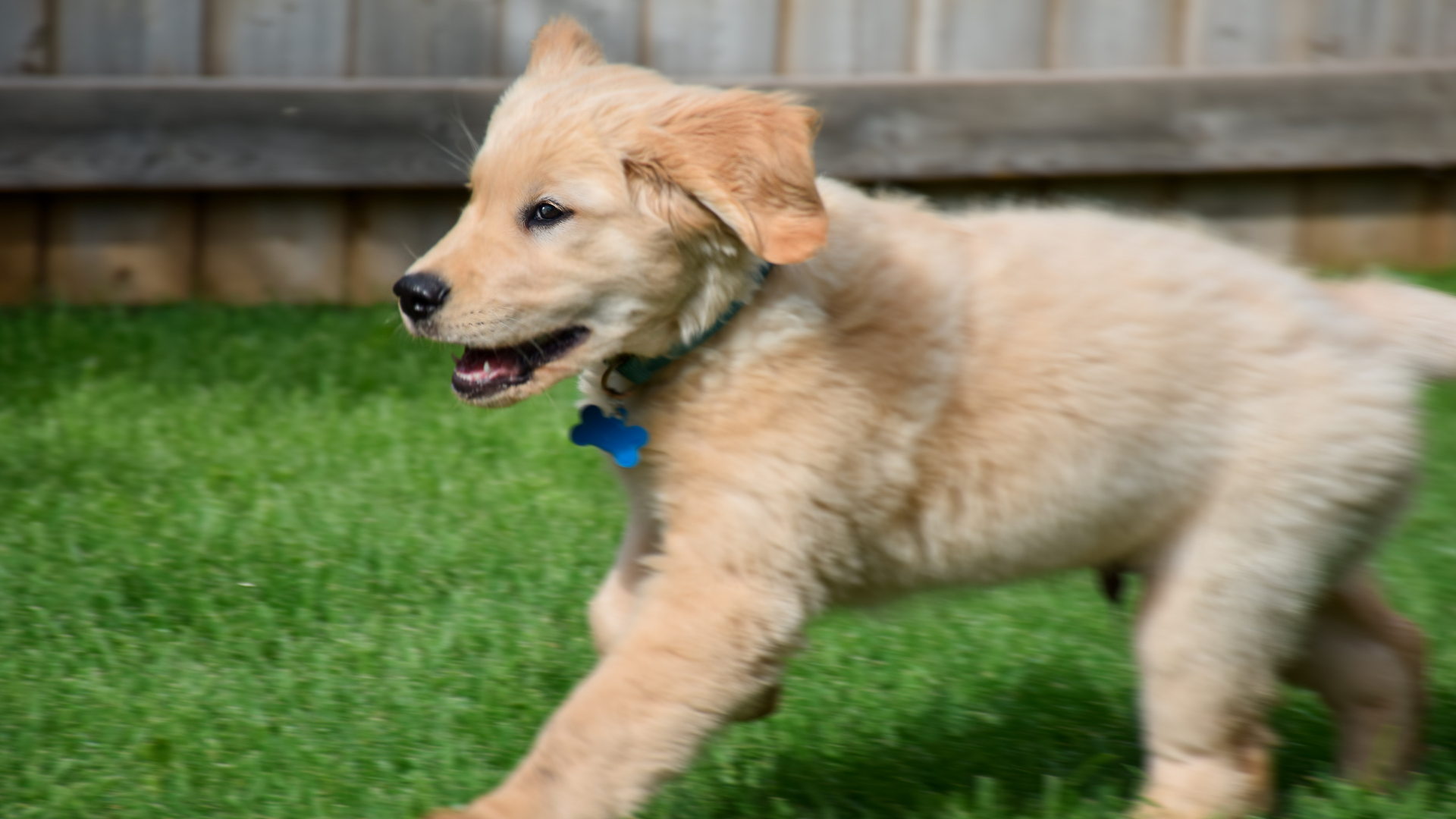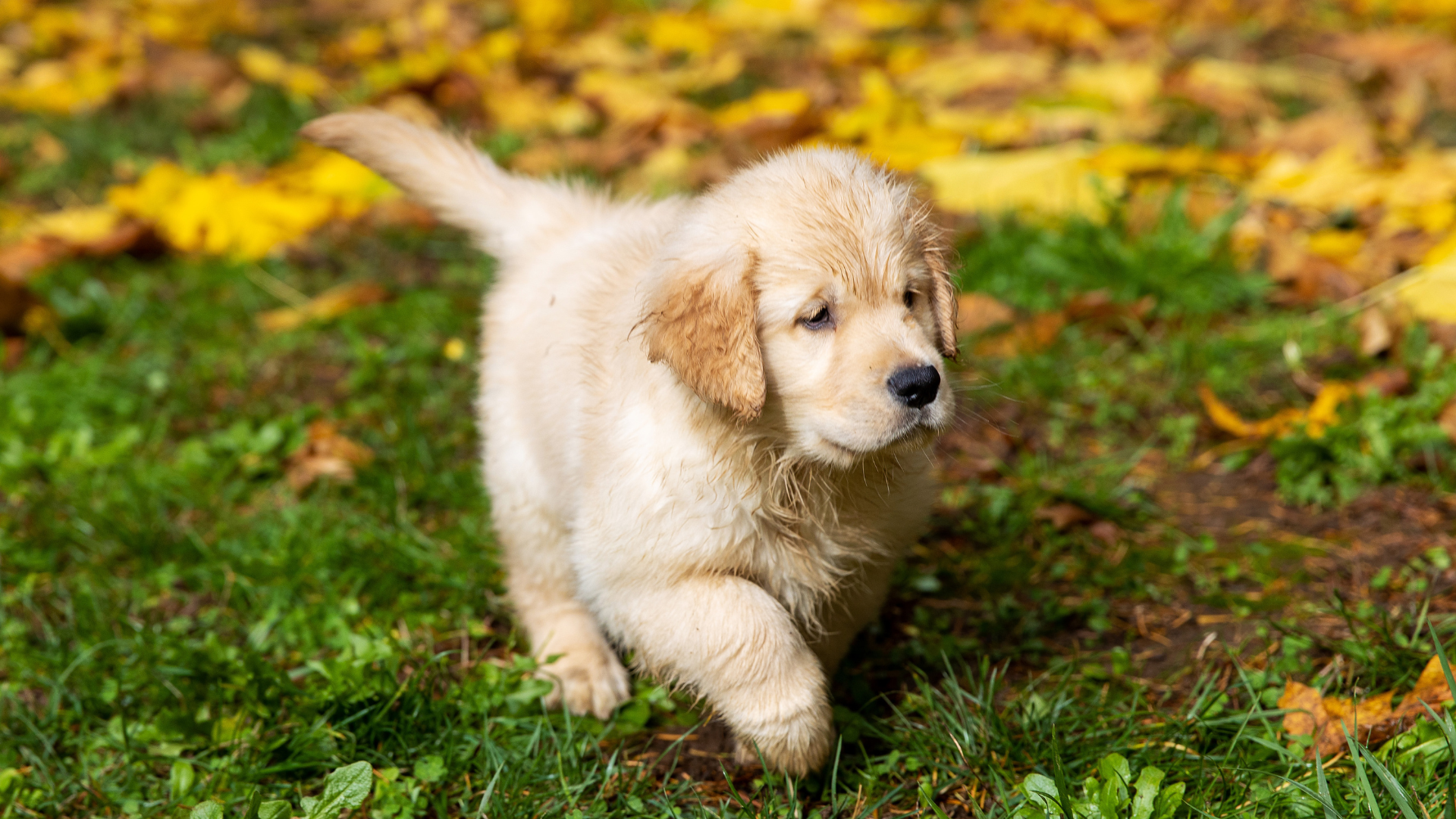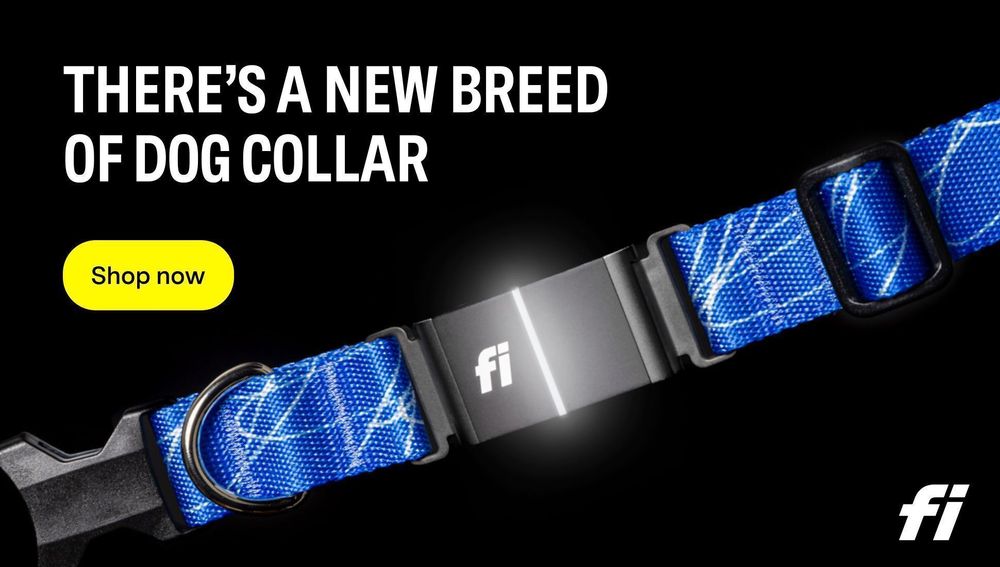Golden Retrievers are one of the most popular dog breeds in the world, and for good reason. They are known for their friendly and affectionate nature, as well as their intelligence and loyalty. As with any puppy, it is important to choose the right collar to ensure their safety and comfort. There are a variety of collars available on the market, each with their own benefits and drawbacks.

One of the most important factors to consider when choosing a collar for a Golden Retriever puppy is their size. As puppies grow quickly, it is important to choose a collar that will fit them well at each stage of their development. A collar that is too tight can cause discomfort and even injury, while a collar that is too loose can slip off and put the puppy at risk. Additionally, it is important to choose a collar that is durable and able to withstand the active lifestyle of a Golden Retriever puppy.

Types of Collars for Puppies
When it comes to choosing a collar for a Golden Retriever puppy, there are several types available. Each type of collar has its own set of benefits and drawbacks. Here are some of the most common types of collars for puppies:
Fi GPS Tracking Dog Collar
Fi GPS tracking Dog Collar is ideal for helping keep your Golden Retriever puppy in the best shape. It enables you to track the dog's exertion levels and steps, which you can compare to other dogs of similar breeds within your neighborhood.

These tracking collars come in four core colors: pink, blue, gray, and yellow. They're a perfect fit for dogs whose neck sizes range between 11.5 and 34.5 inches. With its GPRS tracking feature, you'll instantly get a phone alert if your pup friend ever gets out unexpectedly. Also our collar comes in multiple sizes so you can buy bigger sizes of the collar band as your puppy grows.
Specifications
- Unmatched battery life lasting up to three months between charges
- An accurate way to get notified when your dog escapes
- Shows your dog's location history
- Compatible with smartphone devices
- Supports alarm applications
- Waterproof
Flat Collars
Flat collars are the most basic type of collar and are often used for everyday wear. They are made of a strip of material, usually nylon or leather, and have a buckle or snap closure. Flat collars come in a variety of colors and designs, making them a popular choice for pet owners who want to personalize their pup's look. However, flat collars can be easily slipped out of, so they may not be the best choice for dogs who like to pull or escape.
Martingale Collars
Martingale collars, also known as limited-slip collars, are designed to prevent dogs from slipping out of their collars. They consist of a flat collar with a loop of material that tightens when the dog pulls, preventing the collar from slipping over the dog's head. Martingale collars are a good choice for dogs who like to pull or who have narrow heads, such as Greyhounds or Whippets.
Adjustable Collars
Adjustable collars are similar to flat collars but have a sliding buckle that allows you to adjust the size of the collar. This makes them a good choice for puppies who are still growing, as you can adjust the collar as they get bigger. However, like flat collars, adjustable collars can be easily slipped out of, so they may not be the best choice for dogs who like to pull or escape.
Harnesses
Harnesses are an alternative to collars and are designed to be more comfortable for dogs who like to pull. They consist of a strap that goes around the dog's chest and another strap that goes around the dog's abdomen. Harnesses distribute the pressure from pulling across the dog's chest and abdomen, rather than their neck, making them a good choice for dogs with respiratory issues or neck injuries. Harnesses come in a variety of styles, including front-clip, back-clip, and no-pull harnesses.

Understanding Golden Retriever Puppy Needs
Golden Retriever puppies are adorable and playful. They are also very active and require a lot of attention and care. As a new puppy owner, it is important to understand the needs of your furry friend to ensure they grow up healthy and happy.
Diet
A well-balanced diet is crucial for the growth and development of a Golden Retriever puppy. They require a diet that is high in protein and fat to support their active lifestyle. It is recommended to feed them puppy food until they are at least one year old. Consult with a veterinarian to determine the best diet for your puppy.
Exercise
Golden Retriever puppies are very energetic and require daily exercise to burn off their excess energy. They enjoy playing fetch, going for walks, and swimming. It is important to provide them with enough exercise to prevent them from becoming bored and destructive.
Training
Golden Retriever puppies are intelligent and eager to please, making them easy to train. Start training early to establish good habits and prevent unwanted behavior. Positive reinforcement training is recommended to build a strong bond with your puppy.
Grooming
Golden Retriever puppies have thick, double coats that require regular grooming to prevent matting and tangling. Brush their coat at least once a week and bathe them as needed. It is also important to trim their nails and clean their ears regularly.
Understanding the needs of a Golden Retriever puppy is essential to provide them with the care they need to thrive. With proper diet, exercise, training, and grooming, your furry friend will grow up to be a loyal and happy companion.

Choosing the Right Size and Material
When it comes to choosing a collar for a golden retriever puppy, it is important to consider both the size and material of the collar. Here are some tips to help you choose the right size and material for your puppy's collar.
Measuring Your Puppy's Neck
Before selecting a collar, it is important to measure your puppy's neck to ensure a proper fit. To measure your puppy's neck, use a soft measuring tape and wrap it around the base of the neck, where the collar will sit. Add two inches to this measurement to ensure a comfortable fit.
Selecting Collar Materials
There are a variety of materials to choose from when it comes to selecting a collar for your golden retriever puppy. Here are some of the most common materials:
- Nylon: Nylon collars are lightweight, durable, and come in a variety of colors and designs. They are a great option for puppies as they are easy to clean and adjust.
- Leather: Leather collars are a classic option that are both durable and stylish. They are a bit heavier than nylon collars, but they are more comfortable for some dogs.
- Chain: Chain collars are often used for training purposes and should only be used under the guidance of a professional trainer. They are not recommended for everyday use.
- Martingale: Martingale collars are designed to prevent dogs from slipping out of their collars. They are a good option for dogs with narrow heads, like greyhounds and whippets.
When selecting a collar material, it is important to consider your puppy's individual needs and behavior. For example, if your puppy is prone to chewing, a nylon collar may not be the best option. If your puppy has sensitive skin, a leather collar may be a better choice.
Overall, choosing the right size and material for your golden retriever puppy's collar is an important decision that can impact their comfort and safety. By measuring your puppy's neck and considering their individual needs, you can select a collar that is both comfortable and functional.
Training with the Collar
Training a Golden Retriever puppy with a collar can be a challenging task, but with the right techniques, it can be a rewarding experience. There are two main techniques for training a puppy with a collar, positive reinforcement techniques and leash training basics.
Positive Reinforcement Techniques
Positive reinforcement techniques are based on rewarding good behavior and ignoring bad behavior. The idea is to create a positive association between the collar and good behavior. This can be achieved by giving the puppy treats or praise when they behave well.
When using positive reinforcement techniques, it is important to start slowly. Begin by putting the collar on the puppy for short periods of time and gradually increase the duration. This will help the puppy get used to the collar and avoid any negative associations.

Leash Training Basics
Leash training is an essential part of collar training. It is important to start leash training as early as possible to avoid any bad habits from forming.
The first step in leash training is to get the puppy used to wearing the collar and leash. Start by attaching the leash to the collar and letting the puppy drag it around the house. This will help the puppy get used to the feeling of the leash and collar.
Once the puppy is comfortable with the collar and leash, it is time to start walking on the leash. Begin by walking the puppy in a quiet, low-distraction area. Use treats and praise to reward good behavior and stop walking if the puppy pulls or misbehaves.
Overall, training a Golden Retriever puppy with a collar requires patience and consistency. By using positive reinforcement techniques and leash training basics, the puppy will learn to associate the collar with good behavior and become a well-behaved member of the family.
Safety Considerations
When choosing a collar for a Golden Retriever puppy, safety should be the top priority. Here are some important safety considerations to keep in mind:
Breakaway Features
Golden Retriever puppies are curious and energetic, and they love to explore their surroundings. However, this can sometimes lead to dangerous situations if their collar gets caught on something. To prevent this, it's important to choose a collar with a breakaway feature.
A breakaway collar is designed to release if it gets caught on something, preventing your puppy from getting stuck or injured. Look for collars with a quick-release buckle or a safety snap that will break apart if your puppy pulls too hard.
Reflective Elements
If you plan on walking your Golden Retriever puppy at night or in low-light conditions, it's important to choose a collar with reflective elements. Reflective collars will make your puppy more visible to drivers and other pedestrians, reducing the risk of accidents.
Look for collars with reflective stitching or reflective strips that will reflect light from car headlights or streetlights. This will help keep your puppy safe and visible, even in the dark.
By keeping these safety considerations in mind, you can choose a collar that will keep your Golden Retriever puppy safe and comfortable.
Maintenance and Care
Cleaning the Collar
Regular cleaning of the collar is essential to keep it looking good and free from dirt and bacteria. Golden Retriever puppies are playful and tend to get dirty quickly, so it's important to clean their collar frequently.
To clean the collar, remove it from the puppy's neck and use a damp cloth to wipe it down. For tougher stains, use a mild soap and water to gently scrub the collar. Rinse thoroughly and allow it to air dry before putting it back on the puppy.
Regular Inspection and Replacement
Inspect the collar regularly to ensure that it is still in good condition and not causing any discomfort to the puppy. Check for signs of wear and tear, such as frayed edges or cracks in the material. If the collar is damaged, replace it immediately to prevent any accidents or injuries.
It's also important to adjust the collar as the puppy grows. A collar that is too tight can cause discomfort and restrict breathing, while a collar that is too loose can slip off and get lost. Check the fit of the collar every few weeks and adjust it accordingly.
By following these simple maintenance and care tips, you can ensure that your Golden Retriever puppy's collar stays clean, comfortable, and safe.
Popular Collar Brands for Golden Retriever Puppies

When it comes to choosing a collar for your Golden Retriever puppy, there are a variety of popular brands to consider. Here are a few options:
Blue-9 Balance Harness
The Blue-9 Balance Harness is a popular choice for Golden Retriever puppies due to its adjustable fit and comfortable design. It distributes pressure evenly across the chest and shoulders, which can be especially helpful for puppies who are still learning to walk on a leash.
LupinePet Originals Dog Collar
LupinePet offers a variety of colorful and durable collars that are perfect for Golden Retriever puppies. Their Originals Dog Collar is made from high-quality nylon webbing and features a sturdy buckle and D-ring for attaching a leash.
PetSafe Gentle Leader Headcollar
The PetSafe Gentle Leader Headcollar is a unique option that can help prevent pulling and jumping. It fits over the dog's nose and neck, giving the owner more control over their movements. This can be especially helpful for larger breeds like Golden Retrievers.
Overall, it's important to choose a collar that fits your Golden Retriever puppy comfortably and securely. These popular brands offer a variety of options to suit different needs and preferences.
Conclusion
Choosing the best collar for your Golden Retriever puppy is essential for their safety, comfort, and overall well-being. Consider factors such as size, durability, and adjustability when selecting a collar, and opt for options that prioritize both safety and comfort. With the right collar, you can ensure that your Golden Retriever puppy enjoys many happy and healthy adventures by your side.
FAQs
When it comes to choosing a collar for your Golden Retriever puppy, you may have some questions. Here are some frequently asked questions about puppy collars:
- What size collar should I get for my Golden Retriever puppy?
- It's important to measure your puppy's neck before purchasing a collar. A good rule of thumb is to add two inches to your puppy's neck size to ensure a comfortable fit. For example, if your puppy's neck measures 12 inches, you should purchase a collar that is 14 inches in length.
- What type of material should the collar be made of?
- Collars can be made of various materials such as nylon, leather, or neoprene. It's important to choose a material that is durable and comfortable for your puppy. Nylon is a popular choice for its durability and affordability, while leather is a more expensive option that can last longer. Neoprene is a soft and lightweight material that is great for puppies with sensitive skin.
- Should I choose a collar with a buckle or a quick-release clasp?
- Both options are safe, but it ultimately comes down to personal preference. A buckle collar may be more secure, but a quick-release clasp can be easier to use and can quickly release in case of an emergency.
- Should I get a collar with a tag or a microchip?
- It's recommended to have both a collar with a tag and a microchip for your puppy. A tag with your puppy's name and your contact information can help reunite you with your puppy if they become lost. A microchip is a permanent form of identification that can be scanned by a veterinarian or animal shelter.
- How often should I replace my puppy's collar?
- Collars can become worn or damaged over time, so it's important to regularly check your puppy's collar for any signs of wear and tear. It's recommended to replace your puppy's collar every six months to ensure their safety.




